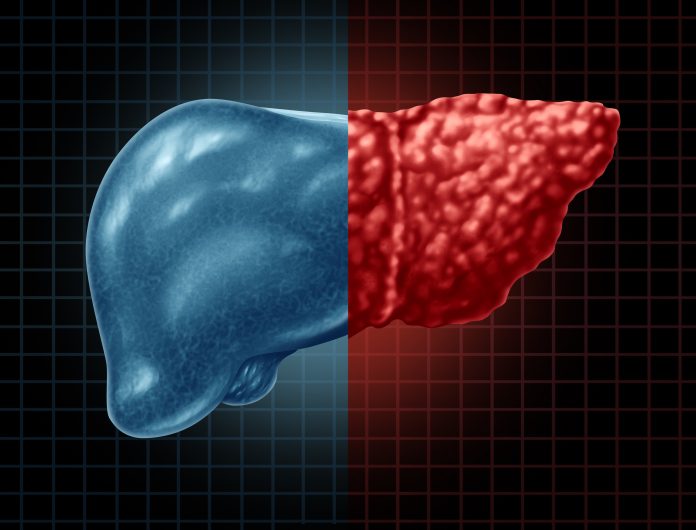
Researchers for the Translation Genomics Research Institute (TGen) and Temple University have uncovered a link to decreases in an enzyme that is linked to nonalchoholic fatty liver disease (NAFLD). A broad term for a range of conditions, NAFLD is an increasingly common—and potentially deadly—condition caused by an excess accumulation of fat in the liver. NAFLD can lead a condition called nonalcoholic steatohepatitis (NASH), characterized by liver inflammation and fibrosis, which in turn increases the risk of developing potentially deadly complications such as cirrhosis and cancer.
The study results, published this week in the International Journal of Molecular Sciences, suggest that regulation of choline, an essentially nutrient typically obtained via the diets of individuals, is critical to normal, healthy liver function. An enzyme called PEMT is the sole source of choline within the human liver, and when there is not enough choline present, fat is not able to be transported out of the liver.
“This collaboration has provided insights that implicate choline deficiency, as a result of decreased PEMT in the liver, as a potential cause of both NAFLD and worsened fibrosis in patients who have progressed to NASH. Low PEMT expression in the liver may predispose some individuals to rapid hepatic fat accumulation because they are not able to get fat out of the liver efficiently,” said Johanna DiStefano, Ph.D., a professor in TGen’s Metabolic and Fibrotic Disease Program and the study’s senior author. “Complicating that further, the modern diet of heavily processed food may not provide as much choline as our bodies need.”
Participants selected for the study were between the ages of 21 and 70 and enrolled in the Bariatric Surgery Program at the Geisinger Clinic Center for Nutrition and Weight Management. According to the study authors, the well-characterized patient cohort encompassed the full spectrum of NAFLD disease and was augmented by gene expression information from NIH and international databases.
“The cohort size and availability of data across the spectrum of NAFLD allowed for the significant results shown,” said TGen research assistant professor Ignazio Piras, Ph.D., the paper’s first author. “To our knowledge, this is the first time the relationship between PEMT genotypes and hepatic PEMT expression has been explored.”
The research team examined 20 known DNA changes that alter how PEMT functions. Analysis of samples from patients suffering from NASH revealed significantly lower PEMT expression than that measured in healthy controls. Patients with liver inflammation were also found to have significantly decreased PEMT, as were those with fibrosis.
A novel observation was a correlation between poor PEMT expression and obesity, a finding that could potentially open the door for this population of patients to be monitored for their risk of developing the condition. This finding is contrary to previous research which led many to associate low body mass index with low PEMT levels.
Further, because PEMT expression is regulated by estrogen, the investigators also studied its relationship to NASH in postmenopausal women.
“We observed significantly decreased hepatic PEMT expression in women with NASH,” DiStefano said. “We also detected a significant decrease in PEMT expression with increasing stage of fibrosis in postmenopausal women.” This phenomenon could be worsened by choline-deficient diets as natural estrogen levels drop, regardless of age.
he team also reported significant decreases in PEMT expression across the histological spectrum, from normal liver histology to fibrosis. Expression data derived from RNA sequencing revealed a similar pattern within the range of fibrosis severity, with complete cirrhosis corresponding to lower PEMT levels than incomplete cirrhosis and bridging fibrosis.













